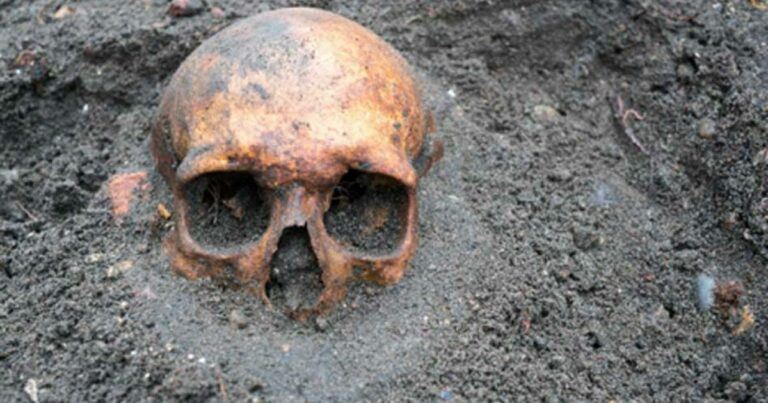In the rich narrative of human evolution, few discoveries have shaken long-standing beliefs as profoundly as the finding in Greece’s Apidima Cave. Unearthed in this significant archaeological site was a 210,000-year-old human skull, now named Apidima 1. Identified as the earliest evidence of Homo sapiens outside Africa, this remarkable finding was detailed in a groundbreaking study published in Nature. It not only redefines the timeline of human migration but also challenges the conventional theories that have shaped our understanding of the human journey for decades. By pushing back the timeline of Homo sapiens leaving Africa by over 50,000 years, this discovery represents a pivotal shift in the story of our species.

The origins of this extraordinary discovery trace back to the 1970s, when Apidima Cave, located on Greece’s picturesque Peloponnese peninsula, yielded two cranial fossils. These remains, later named Apidima 1 and Apidima 2, were initially assumed to belong to Neanderthals, a prevalent hominin species of that era. However, due to the limitations of research techniques at the time, these fossils remained largely unexamined for decades. It was only in recent years that a multinational research team, spearheaded by paleoanthropologist Katerina Harvati, revisited these specimens with the help of cutting-edge digital reconstruction and radiometric dating technologies. This advanced approach would ultimately unveil the extraordinary nature of the Apidima fossils, reshaping our understanding of early human history.
The analysis of Apidima 2 confirmed it as an early Neanderthal skull, dated to approximately 150,000 years ago. While this finding was significant, it was the discovery regarding Apidima 1 that truly startled the scientific community. Initially categorized as another Neanderthal fossil, Apidima 1 was revealed to be an early Homo sapiens specimen. Even more astonishingly, the skull was dated to 210,000 years ago, making it the oldest known evidence of Homo sapiens found outside Africa. This revelation necessitated a reevaluation of long-held assumptions about the timing and nature of human migration from our ancestral homeland.
The implications of this finding are profound. For decades, scientists believed that Homo sapiens first ventured out of Africa approximately 60,000 to 70,000 years ago in what is often described as a major migratory wave. However, the Apidima skull suggests that earlier, smaller, and likely less successful migration waves occurred over 200,000 years ago. These early groups of Homo sapiens may not have survived or proliferated extensively, but their presence in Europe at such an early date provides a glimpse into the complexities of human migration patterns. This discovery underscores the idea that the journey of Homo sapiens was not a singular, linear event but rather a series of movements influenced by a dynamic interplay of environmental, climatic, and biological factors.
Moreover, the Apidima discovery contributes to a growing body of evidence suggesting that the evolutionary history of humans was far more intricate than previously imagined. For years, the narrative of human evolution was often depicted as a straightforward progression: Homo sapiens emerged in Africa, migrated outward, and gradually replaced other hominin species like the Neanderthals. However, discoveries like Apidima 1 challenge this simplified view, revealing a more nuanced story in which different human species coexisted, interacted, and likely influenced each other both culturally and genetically.
The coexistence of Homo sapiens and Neanderthals, for example, is now well-documented through genetic studies, which show that modern humans outside Africa carry a small percentage of Neanderthal DNA. The Apidima finding adds another layer of complexity to this relationship, suggesting that Homo sapiens were present in Europe long before Neanderthals reached their evolutionary peak. This raises intriguing questions about the nature of interactions between these species during their overlapping periods of existence. Did they compete for resources? Did they exchange cultural practices or technology? Or were these early waves of Homo sapiens isolated and ultimately outcompeted by Neanderthals? These questions remain open, but the Apidima skull provides a vital clue in unraveling the multifaceted story of human evolution.
Beyond its scientific significance, the Apidima discovery serves as a reminder of the importance of embracing complexity in understanding our past. Human history is not a simple tale of progress but a rich tapestry woven from countless threads, each representing a unique migration, adaptation, or interaction. By studying these early chapters of our story, scientists gain valuable insights into the resilience and adaptability of our species—qualities that have enabled Homo sapiens to thrive in diverse and often challenging environments across the globe.
The rediscovery and analysis of the Apidima skull also underscore the value of reexamining previously collected fossils and artifacts. Advances in technology continually enhance our ability to extract new information from old discoveries, transforming artifacts that once seemed unremarkable into key pieces of the evolutionary puzzle. The work of Katerina Harvati and her team exemplifies the importance of applying modern techniques to historical finds, revealing insights that were unimaginable just a few decades ago.
In conclusion, the Apidima skull discovery represents far more than just a remarkable addition to the fossil record. It challenges deeply entrenched assumptions about human evolution and migration, opening new avenues for research and exploration. This finding reminds us of the ever-evolving nature of scientific knowledge, which continually reshapes our understanding of the world and our place within it. As researchers delve deeper into the mysteries of our origins, each discovery brings us closer to comprehending the intricate and awe-inspiring journey of Homo sapiens.
The enigmatic skull from Apidima Cave is not just a relic of the past—it is a testament to the dynamic and unpredictable nature of human history. By rewriting the timeline of human migration and shedding light on the complexities of our evolutionary journey, it promises to shape our understanding of humanity for generations to come. As we uncover more evidence and piece together the puzzle of our origins, the story of Homo sapiens becomes ever richer and more compelling, inviting us to approach our shared history with curiosity, humility, and a profound appreciation for the interconnectedness of all human life.





